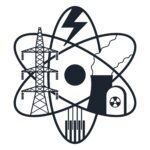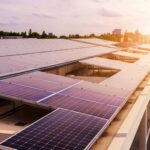It’s the weekend! Kick back and catch up with these must-read articles from around the web.
The U.S. Will Need a Lot of Land for a Zero-Carbon Economy (Bloomberg) At his international climate summit last week, President Joe Biden vowed to cut U.S. greenhouse gas emissions in half by 2030. The goal will require sweeping changes in the power generation, transportation and manufacturing sectors. It will also require a tremendous amount of land. Wind farms, solar installations and other forms of clean power take up far more space on a per-watt basis than their fossil-fuel-burning brethren. A 200-megawatt wind farm, for instance, might require spreading turbines over 19 square miles (49 square kilometres). A natural-gas power plant with that same generating capacity could fit onto a single city block. Achieving Biden’s goal will require aggressively building more wind and solar farms, in many cases combined with giant batteries.
How Renewables Could Kill Off Fossil Fuel Electricity By 2035: New Report (Forbes) Solar and wind energy have the potential to meet global electricity demand 100 times over, and the costs of these renewables are collapsing so rapidly that fossil fuels could be pushed out of electricity generation altogether by 2035, according to a report by a U.K. think tank. The report, from London-based non-profit Carbon Tracker, reveals that solar and wind have the potential to produce thousands of petawatt hours (PWh) of electricity a year, while the world’s current electricity demand stands at just 27 PWh. Furthermore, Carbon Tracker shows, if humans chose to get all their energy from solar power alone, the land required would take up just 450,000 km2—just 0.3% of the world’s total land area, and less than the space currently taken up by fossil fuel industry operations.
Webinar: Systems Vs. Silos – ESG, Net Zero Roadmaps and Making Climate Action Plans Reality (Duke Energy Sustainable Solutions) Whether your organization has just announced a net-zero target or is on an advanced climate action path, there is always more to do. For Duke Energy, one of the U.S.’s largest energy holding companies, the path includes managing the nation’s largest coal transition, addressing materiality and reporting to meet evolving requirements, and assuring affordable and reliable energy for all of its 7.9 million residential, small business and large corporate customers. Join a candid discussion on the ESG opportunities – and challenges – and the various ways companies can meet their net-zero goals.
Report: Solar power now the ‘cheapest electricity in history’ (Patch) Solar power is now “the cheapest electricity in history,” according to a recently-released International Energy Agency (IEA) report. Sunshine is, and always has been, free–but harnessing it to power your home hasn’t always been cost-efficient. That’s no longer the case. Thanks to both major improvements in solar technology in recent years, as well as to state and federal efforts to combat climate change, renewable energy is more affordable than ever. On top of that, solar installers are now facing high competition from rising consumer demand, meaning even lower prices for consumers.
Biden touts climate investment as creating jobs (The Hill) President Biden pitched the climate measures he’s hoping to put in place as job-creating proposals during his first address to Congress on Wednesday night. The president has sought to tie his climate agenda to jobs, including in his $2.3 trillion infrastructure plan, which seeks to create jobs in areas such as electric vehicles and efficient building upgrades. “When I think about climate change, I think jobs,” Biden said Wednesday. “The American Jobs Plan will put engineers and construction workers to work building more energy-efficient buildings and homes.”
Wind power a smaller contributor to Texas electricity crisis than initially estimated, ERCOT analysis shows (The Texas Tribune) An updated analysis of February’s Texas power crisis by experts at the Electric Reliability Council of Texas shows that lost wind power generation was a small component of the huge losses in electric generation that plunged much of the state into darkness during the severe cold weather. While Texas Republicans were quick to blame renewable energy during the storm — and have continued to target renewable energy for reform during this year’s legislative session — a recently updated report on the causes of generator outages during the week of Feb. 14 show that the most significant cause of the low power supply to the grid came from natural gas plants shutting down or reducing electricity production due to cold weather, equipment failures and natural gas shortages.
Opinion: With Federal Support, NYC Can Become World-Leading Hub for Clean Energy (City Limits) Building a city that is more resilient in the face of climate change and plotting a future for green energy are imperatives for New York City. That is why we are investing millions of dollars and planning hours to grow an offshore wind hub, to create local training programs and pipelines for green jobs and construct much-needed protections for our coastlines and our residents. Since 2018, New York City Economic Development Corporation has been preparing New York City to be a regional hub for offshore wind staging and installation. We see our support for producing clean power as essential for the city’s health and longevity, and to its long-term recovery and reemergence following COVID-19.
NULL




